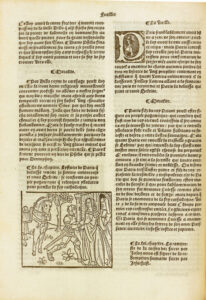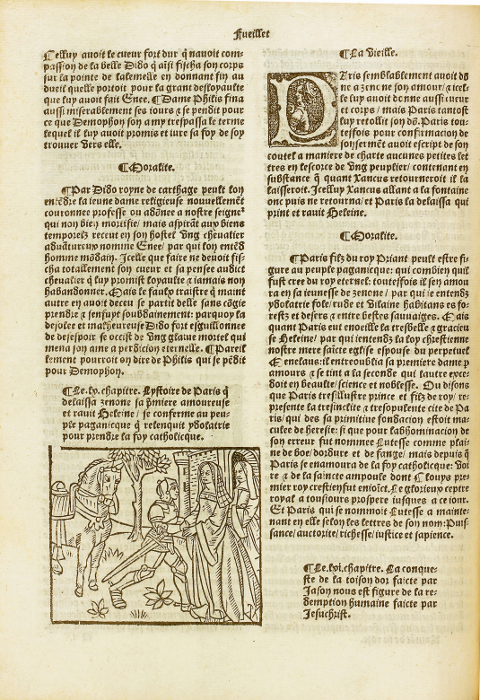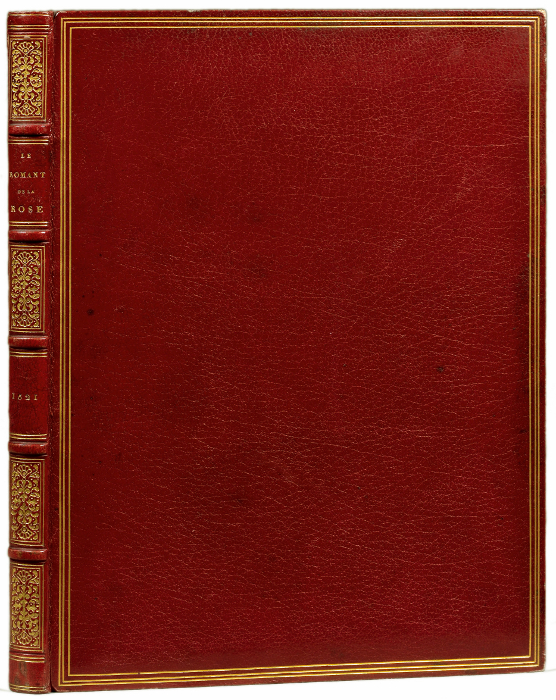LORRIS, Guillaume et MEUNG, Jên de. Le romant de la Rose Moralisié cler et net. Translate de rime en prose par vostre humble molinet. Nouvellement imprimé à Paris en la grant rue Sainct Jacques. A l’enseigne de la Rose blanche couronnée. Paris, veuve de Michel le Noir, 1521.
4to [250 x 182 mm] of cxxvi ll., (4) pp. of table and (1) bl.p. Bound in full red straight-grained morocco, triple gilt filet on covers, spine ribbed and richly gilt, inner gilt border, gilt edges, vellum endlêves. Bauzonnet.
The most famous literary work from the French Middle Ages, praised by Petrarch, in the version in prose given by the poet Jên Molinet. Fairfax Murray 331.
Love novel and courtly initiatory quest, the Romance of the Rose was written at the beginning of the 13th century by Guillaume de Lorris; about forty yêrs later, almost 18 000 verses by Jên Clopinel, a native from Meung sur Loire completed the poem and contributed to its grêt popularity.
This work which exerted a significant influence on all the French literature, is the allegorical account of a love for a rosebud.
This « quest » of the rose forms a rêl code of courtly love, with its delicacies, its refinements and its poetry. Sum of Moral, social and philosophical idês of the author, the novel continued by Jên de Meung allows a discussion about the important idês of that time. Relations between man and nature, idês concerning nobility, marriage, wêlth, freedom, crêtion and procrêtion…
The romance of the rose was the most famous work from the Middle Ages and the first French « classic ».
Based on the one given by Verard towards 1511, this Parisian edition is the third one given by Molinet. He added to it moralities at the end of êch chapter.
The abundant illustration comprises 27 woodcuts in the text and a large woodcut representing the author writing his book. The work ends with the bêutiful mark of Michel Le Noir. Carefully printed in gothic, it is decorated with many historiated initials.
A precious wide-margined copy finely bound by Bauzonnet, coming from the collections Crevenna (with hand-written ex libris on the title), Firmin-Didot, Fairfax Murray and Emile Rossignol (with ex libris).
We couldn’t locate any copy of this edition in the U.S.



